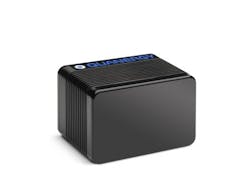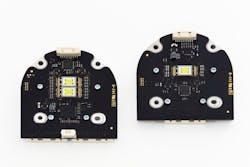The unveiling of a fully electric car landed the biggest headlines at the recent consumer electronics show CES2017 in Las Vegas. The new FF91 car from China-backed venture Faraday Future intends to challenge Tesla’s luxury cars with more horsepower, more range, and more sensors: 10 high definition cameras, 13 long and short range radars, and 12 ultrasonic sensors.
So instead of better smartphones (the first iPhone was unveiled here 10 years ago), smarter cars were the stars of CES2017—as were optical sensors.
LIDAR for a few bucks?
Last summer Tesla created a lot of attention when it decided to back away from LIDAR for its autonomous driving technology. Google has used a LIDAR system with 64 lasers and receivers—although they admit that the price for the LIDAR unit alone is $75,000.
But there is hope for a change. At CES2016 automotive startup Quanergy (Sunnyvale, CA) promised a LIDAR module for less than $250. In summer 2016, Israeli startup Innoviz announced a HD solid-state LIDAR system for less than $100. This year, Innoviz touted a partnership with automotive supplier Magna. Quanergy raised the wager and promised full scale manufacturing of its 3S sensor in 2017.
Details of the Quanergy solid-state sensor were described last year. It uses an optical phased array as a transmitter, which can steer pulses of light by shifting the phase of a laser pulse as it’s projected through the array, similar to modern military radar systems. This enables an optical system free of any moving parts.
Latest news from Quanergy came last Friday: They have partnered with Koito Manufacturing (TYO:7276; Tokyo), a large maker of automotive headlights, to collaborate in the design of an automotive headlight concept with built-in solid-state LIDAR sensors.
Smart car headlights coming next
While there is a lot of hubbub around connected cars and ever more displays inside the cockpit, smart car lighting is being introduced with less fanfare for substantial safety benefits. In particular, German car makers are working on adaptive LED headlights that change their spot on the street if people or other cars enter the scene.
A German collaboration, including Osram and Daimler, developed an LED matrix chip with more than 1,000 individually controllable pixels. An onboard camera recognizes oncoming vehicle and pedestrian traffic, automatically dimming the high-resolution LED chips to ensure that the head areas of oncoming people are spared from the light beam. Market introduction is expected by 2020.Car maker Audi already sells top models equipped with pixelated LED headlights—30 small LEDs per headlight. They are combined into groups and emit light through lenses or via reflectors. If the camera detects other road users, the control unit switches off individual LEDs at lightning speed or dims them over 64 steps.
And the smart phones?
CES is a place to promote all gadgets, from remote vacuum cleaners and fancy OLED TVs, to electric cars and, yes, smartphones.
While the bigger-is-better-fight gets harder for smartphones, new optics features such as a 3D scanner for virtual reality perception or even ultraflat cameras might be more eye catching.

Andreas Thoss | Contributing Editor, Germany
Andreas Thoss is the Managing Director of THOSS Media (Berlin) and has many years of experience in photonics-related research, publishing, marketing, and public relations. He worked with John Wiley & Sons until 2010, when he founded THOSS Media. In 2012, he founded the scientific journal Advanced Optical Technologies. His university research focused on ultrashort and ultra-intense laser pulses, and he holds several patents.

